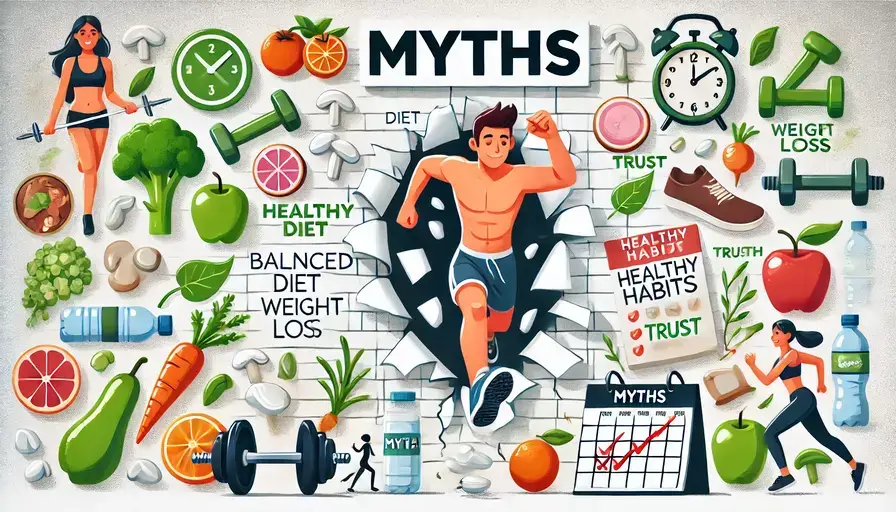Understanding Keto Flu: Symptoms, Duration, and Remedies
Explore the keto flu, its symptoms, why it occurs during the keto diet transition, how long it lasts, and effective remedies to ease discomfort.
Posted by
Related reading
Navigating Food Challenges at Work: Tips for a Healthier Office
Explore effective strategies to overcome common food challenges in the workplace and maintain a healthy lifestyle throughout your workday.
Mastering Meal Planning: Your Ultimate Guide to Healthier Eating
Discover the art of meal planning to save time and money while promoting healthier eating habits. Follow these simple steps for success.
Addressing Childhood Obesity: Practical Tips for Families
Explore effective strategies for combating childhood obesity and promoting healthy habits within families.
Healthy Cooking at Home: 6 Strategies for Weight Loss
Discover the key benefits of home cooking and practical tips to make healthy meals that support weight loss goals without sacrificing flavor.
Transitioning to Weight Maintenance: Your Essential Guide
Learn how to successfully transition from weight loss to weight maintenance with practical tips and strategies tailored for your journey.

The Keto Diet: An Overview
The ketogenic, or keto diet, has gained remarkable popularity, primarily for its promise of rapid weight loss. On social media, transformation stories abound, showcasing stunning results that attract many people to try this low-carb high-fat dietary approach. However, while some people may experience significant benefits, it’s essential to recognize that the keto diet is not suitable or safe for everyone. Unlike traditional dietary recommendations that suggest 45 to 65 percent of daily caloric intake from carbohydrates, the ketogenic diet dramatically restricts carbs to only about 5 to 10 percent, while a heavier emphasis is placed on fat (70 to 80 percent) and moderate protein (10 to 20 percent).
As the body adjusts to these new macronutrient ratios, many people encounter a range of unpleasant flu-like symptoms known as "keto flu." Understanding this phenomenon can help to navigate the keto diet with greater ease.
What is Keto Flu?
Keto flu is not an actual influenza virus, but rather a term used to describe a collection of symptoms akin to those of the flu, which some individuals experience when transitioning to a ketogenic diet. These symptoms arise as the body reacts to the sudden and significant reduction of carbohydrate intake.
Keto Flu Symptoms
The symptoms of keto flu can vary from mild to severe and often include:
- Nausea
- Vomiting
- Headache
- Fatigue
- Dizziness
- Insomnia
- Constipation
- Reduced exercise tolerance
- Diarrhea
- Irritability
- Muscle cramps
- Bad breath
- Poor concentration
- Stomach pain
- Muscle soreness
These symptoms typically emerge within a few days of beginning the diet and can last anywhere from three days to several weeks as the body adjusts to its new fuel source.
The Science Behind Keto Flu
Although comprehensive scientific literature specifically examines keto flu, many experts believe its symptoms result from carb withdrawal. Carbohydrates are crucial for providing energy to both the body's cells and the brain. When switching to a ketogenic diet, the abrupt reduction in carbohydrate intake can lead to feelings of lethargy, irritability, and cognitive difficulties.
Moreover, dehydration may also contribute to keto flu symptoms. During the initial phases of the diet, the body utilizes its glycogen stores, prompting a loss of water and electrolytes (such as sodium, potassium, and magnesium) essential for proper bodily function. This depletion can manifest as symptoms resembling those of the flu.
Duration of Keto Flu
The duration of keto flu varies from person to person. Generally, symptoms can appear within 72 hours of significantly reducing carbohydrate intake and might last between one and four weeks. Factors that can affect the duration of keto flu include the individual’s prior glycogen stores, activity level, and how quickly they reduce their carbohydrate intake.
How to Alleviate Keto Flu Symptoms
While there may not be a definitive cure for keto flu, several strategies can help ease its symptoms or facilitate a smoother adjustment to the diet:
-
Stay Hydrated: Adequate hydration is crucial, especially since the body loses fluid during the early phases of the ketogenic diet. Drinking plenty of water can help mitigate dehydration and related symptoms.
-
Gradually Reduce Carbs: Instead of cutting carbohydrates precipitously, consider tapering down your intake gradually over days or weeks, allowing your body time to adjust more comfortably.
-
Engage in Moderate Exercise: During the initial adjustment phase, opt for low-intensity exercises like walking or jogging. High-intensity workouts can deplete energy levels, making adaptation more challenging.
-
Prioritize Sleep: Sufficient rest is essential as it assists the body in recovery and adaptation. Focus on getting enough sleep to combat stress and improve overall well-being.
-
Supplement with Electrolytes: Maintain adequate intake of electrolytes, such as sodium, potassium, and magnesium. While some foods commonly rich in these nutrients may be limited on the keto diet, other keto-friendly options like leafy greens and avocados can help meet your needs.
Is Keto Flu Serious?
While keto flu symptoms can be uncomfortable, they are typically not life-threatening. However, it’s crucial to remain vigilant about dehydration and keep an eye out for symptoms that could indicate more serious health risks. If any concerns arise, consulting a healthcare professional is always advised.
Final Thoughts on the Keto Diet
While the keto diet may offer benefits, it is essential to take a cautious and informed approach. The potential challenges of keto flu and other risks warrant careful consideration, especially for individuals with pre-existing health conditions. The decision to embark on a ketogenic diet should involve thoughtful deliberation and consultation with health experts when necessary.
In conclusion, the ketogenic journey can be both rewarding and challenging. Understanding your body's reactions and being prepared with strategies can help guide you through a successful transition.
Other Interesting Articles

Self-Compassion for Better Health
Learn how embracing self-compassion can enhance your weight loss journey and overall wellness through kindness to oneself.

What Are Some Common Myths About Weight Loss?
Discover the truth behind common myths about weight loss and learn evidence-based strategies for effective weight management.

Understanding Overweight and Obesity: Definitions, Risks, and Treatments
Explore the definitions of overweight and obesity, the associated health risks, and the various treatment options available to improve health outcomes.

The Carnivore Diet: Understanding Its Benefits and Risks
Explore the carnivore diet, an all-meat eating plan that promises weight loss and health benefits. Learn about its potential risks and meal suggestions.